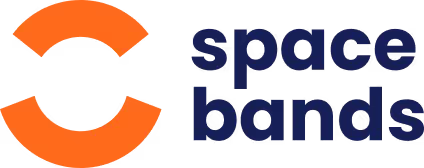
spacebands is a multi-sensor wearable that monitors external, environmental hazards, anticipates potential accidents, and gives real-time data on stress in hazardous environments.
Sign up to the mailing list:
Subscribe


We speak with Dave Thompson, Health & Safety Manager in the sawmill industry to get his industry expert opinion...
I have a long history in retail (bicycle mechanic, workshop manager, store manager, stock control, despatch/warehouse and H+S) before moving into manufacturing. Firstly, in a FMCG food company and currently in sawmilling.

My current role is varied as I am responsible for ESH for the whole process, from harvesting trees to lorries leaving the gate loaded with sawn and treated timber.
I spend my time about 60/40 split between shop floor/office, sometimes moving my admin work around the site on laptop or tablet when I have lots to do. This allows me time to see and hear what’s going on around site and to be seen.
I have audits and inspections to carry out but also like to engage with employees.
I tend not to have too many planned meetings in a day which allows me so much time out.
Visibility, curiosity, and compassion.
A good relationship with operational managers.
We’ve recently finished commissioning our robot to reduce manual handling of heavy round timber products.
Zone-Safe proximity sensors in vehicles to warn drivers and pedestrians of each other’s presence.
Fire and smoke detecting cameras.
Risk Led Safety by Duncan Spencer and Chris Jerman

They usually find me by email or through Sales Reps.
iPad mini and the app - Agenda by Momenta BV.

The old sales phrase ‘Sell the sizzle, not the sausage.’ Sell the benefits of an investment rather than its features.
spacebands have written a blog - How to create a positive health & safety culture and maintain it. There is a section in the article which covers how to get buy-in from management and from employees.
Start small and get buy-in from one team who can help seed the change elsewhere. From there it is a matter of dealing with the stragglers who don’t see the benefit through checking systems and processes.
Traffic – We use regular induction or refreshers for visiting lorry drivers and pedestrians. Traffic lights around site. Segregated walkways, where there are zebra crossings, vehicles have priority so that pedestrians don’t walk out in front of vehicles that have heavy loads and poor visibility. Zone-Safe proximity warning system.
Fire is always a risk in a sawmill. We have lots of early warning systems, rigorous training, and fire wardens to help keep us safe.
I think AI will play a very important role in health and safety in the near future. AI has many applications and benefits for improving the delivery of healthcare and medicine worldwide, as well as for enhancing the prevention and management of occupational health and safety risks. According to the WHO, AI holds great promise for transforming health and safety, but only if ethics and human rights are put at the heart of its design, deployment, and use. Some of the ways that AI can support health and safety are:
• AI can help with the identification and prediction of hazards, such as near-miss detection, speech recognition, image recognition, and situation awareness.
• AI can assist with clinical care, such as diagnosis, screening, treatment, and drug development.
• AI can provide real-time monitoring and feedback, such as worker management systems, wearable devices, sensors, and drones.
• AI can enable learning and training opportunities, such as virtual reality, machine learning, and algorithms.
• AI can empower patients and workers to take greater control of their own health care and well-being, such as personalised medicine, self-care, and health literacy.
However, AI also poses some challenges and risks for health and safety, such as:
• AI may not be reliable or accurate enough for certain tasks or contexts, such as complex or dynamic environments, or situations that require human judgment or intuition.
• AI may have unintended or harmful consequences, such as ethical dilemmas, privacy breaches, data misuse, biases, discrimination, or social impacts.
• AI may create new or increased hazards or risks, such as cyberattacks, environmental damage, human error, or worker displacement.
• AI may require new or different skills or competencies for health and safety professionals, such as technical knowledge, digital literacy, or ethical awareness.
I think AI will play a part in health and safety in the near future, but it will also require careful consideration and regulation to ensure that it is used in a responsible and beneficial way.
We hope you enjoyed this article, you can read and learn from other industry experts from across the globe, and learn from their insights into health & safety in a variety of industries.
We think you'll also find the articles below really useful
Join 5,000 H&S professionals and sign up for the spacebands monthly newsletter and get the latest blogs, free resources, tools, widgets and a dose of health & safety humour.

spacebands is a multi-sensor wearable that monitors external, environmental hazards, anticipates potential accidents, and gives real-time data on stress in hazardous environments.
